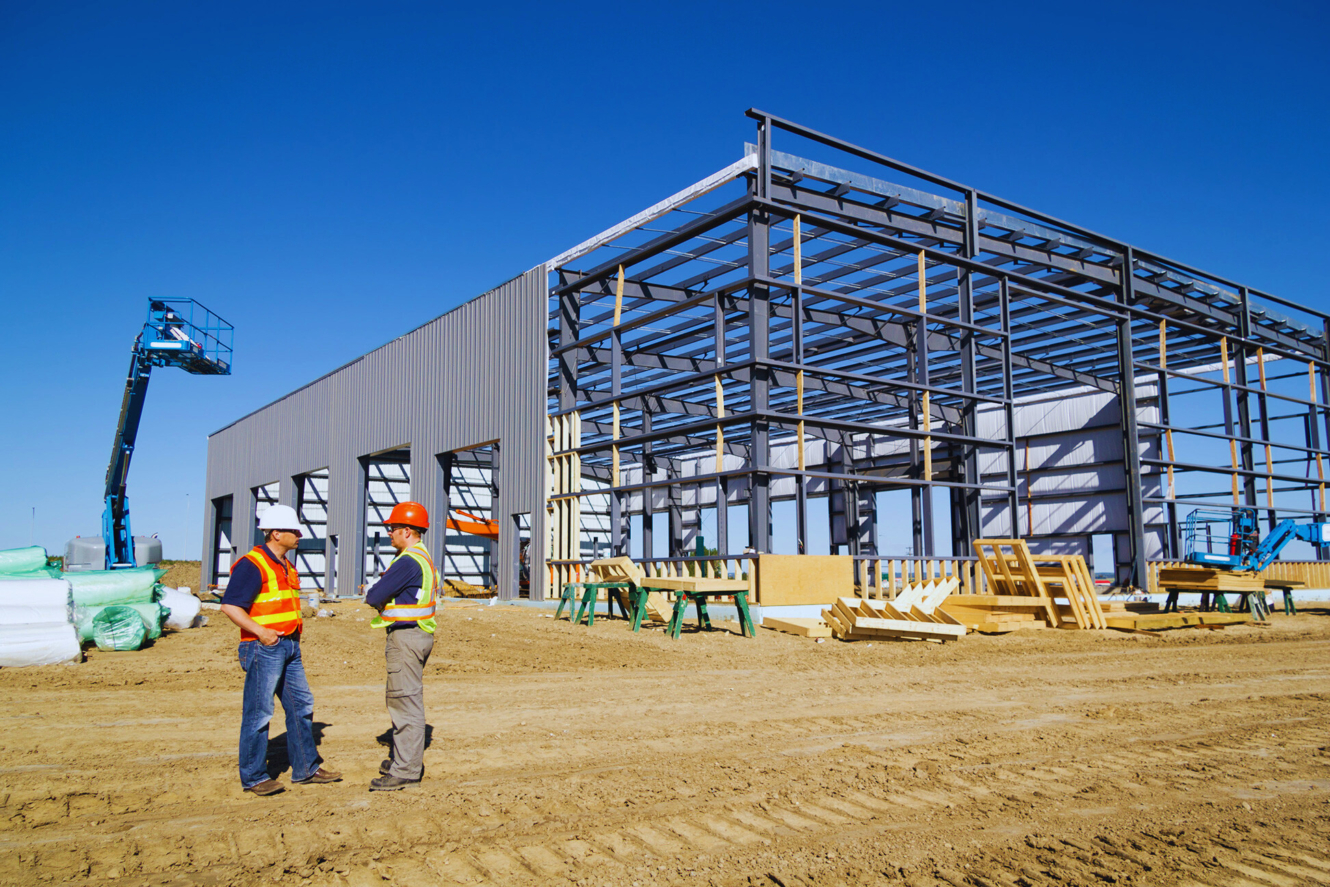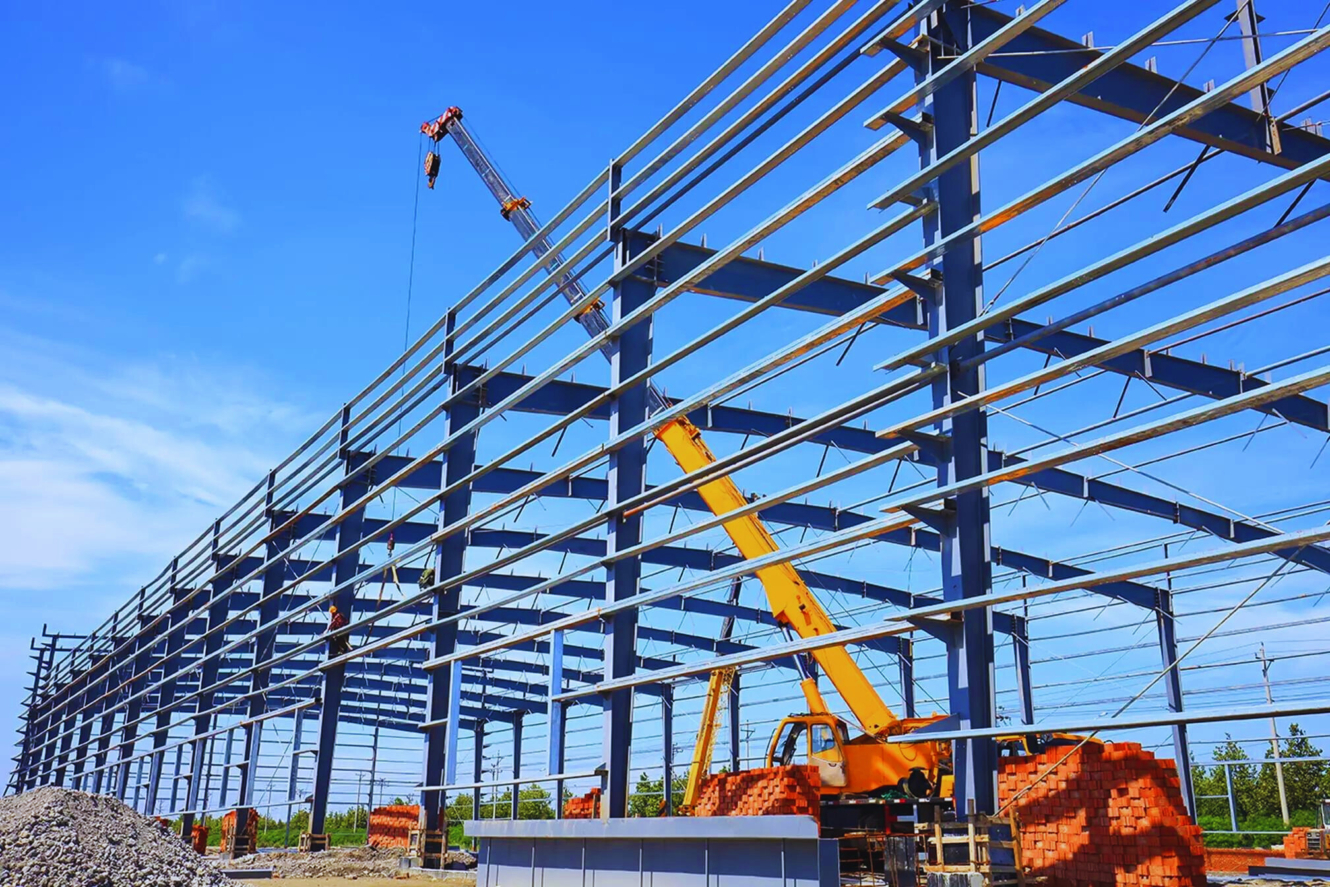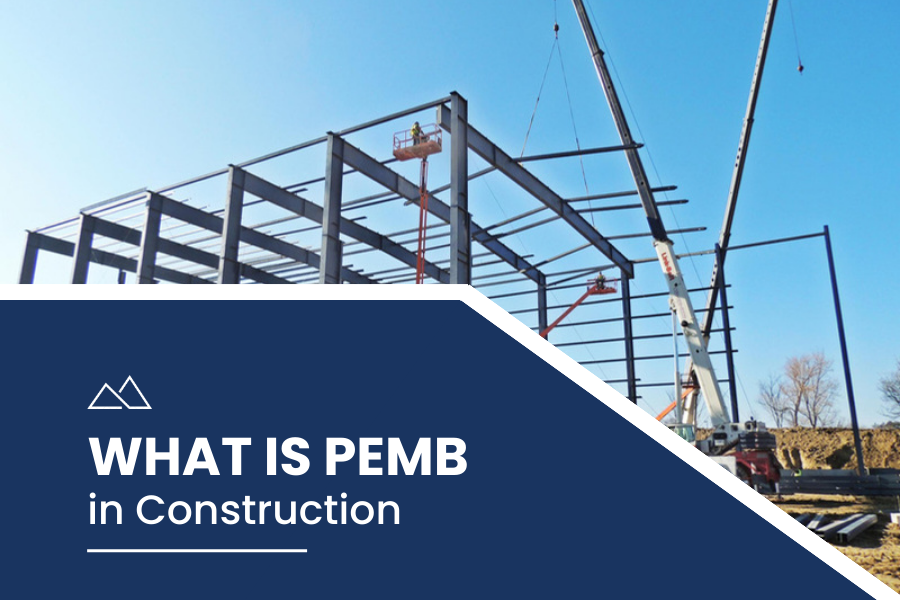What is PEMB in Construction?
What is PEMB in Construction: PEMB, or Pre-Engineered Metal Building, refers to a structural system in which the building’s main components are manufactured at a factory and then assembled on-site. This construction method is in contrast to traditional building techniques where components are fabricated on-site, making PEMB an efficient and cost-effective solution for various construction projects.
Table of Contents
1. The Components of PEMB
PEMB typically consists of the following components:
1. Main Frames: These are the primary load-bearing structures of the building and are made of steel. They include rigid frames and tapered beams.
2. Secondary Framing: This includes elements like purlins, girts, and eave struts, which provide additional support and stability to the building.
3. Roof and Wall Panels: These panels, usually made of steel, serve as the building’s envelope, providing protection from the elements.
4. Accessories: PEMB systems include a range of accessories such as gutters, downspouts, insulation, and vents.

2. Advantages of PEMB
PEMB offers several advantages that have made it a popular choice in the construction industry:
1. Speed and Efficiency
As the majority of the components are manufactured in a controlled environment, the construction process is highly streamlined. This leads to faster project completion and reduced labor costs.
2. Cost-Effectiveness
PEMB can be more cost-effective than traditional construction methods due to reduced material waste and shorter construction timelines.
3. Durability
The steel components used in PEMB are highly durable and can withstand harsh weather conditions, making these structures long-lasting.
4. Design Flexibility
PEMB systems are versatile, offering a wide range of design possibilities. This allows architects and builders to create unique and aesthetically pleasing structures.

3. Applications of PEMB
PEMB is used in various construction projects across different industries. Some common applications include:
1. Warehouses and Storage Facilities: The efficiency and cost-effectiveness of PEMB make it ideal for constructing large storage spaces.
2. Agricultural Buildings: Farm owners often choose PEMB for barns, livestock shelters, and equipment storage.
3. Commercial Buildings: PEMB is also used for constructing retail stores, offices, and recreational facilities.
4. Aircraft Hangars: The spaciousness and durability of PEMB are well-suited for aircraft hangars.
5. Sports Arenas: Many sports arenas have utilized PEMB due to its ability to create large, open spaces.

4. Conclusion
In conclusion, Pre-Engineered Metal Buildings (PEMB) have revolutionized the construction industry with their efficiency, cost-effectiveness, and durability. From warehouses to sports arenas, PEMB is proving to be a versatile and reliable choice for a wide range of construction projects. As the construction industry continues to evolve, PEMB is likely to play an even more significant role in shaping its future.
5. FAQs
Q1. Is PEMB the same as traditional steel construction?
No, PEMB is a more streamlined approach where components are manufactured off-site, unlike traditional steel construction, which involves on-site fabrication.
Q2. Are PEMB structures customizable?
Yes, PEMB structures offer design flexibility and can be customized to meet specific project requirements.
Q3. What are the environmental benefits of PEMB?
PEMB construction generates less waste and typically uses recyclable materials, making it an environmentally friendly option.
Q4. Is PEMB suitable for residential construction?
While PEMB is primarily used in commercial and industrial settings, it can be adapted for some residential applications.
Q5. How long does it take to construct a PEMB building?
The construction time varies depending on the size and complexity of the project, but PEMB structures are generally quicker to build compared to traditional construction methods.


